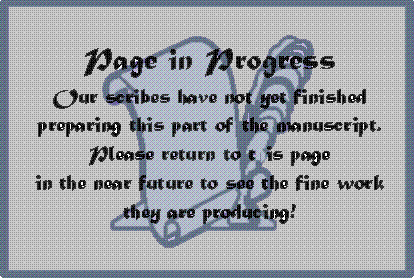Old English Inflections and Word Order
Old English was a highly inflected language, meaning that endings and slight changes with words provided much information about the word's function in a sentence, such as whether a particular noun is used as the subject, direct object, or indirect object of a verb. Frequently, highly inflected languages have very flexible word order because word order is not needed to provide that information about the word's function. This is in marked contrast to modern English, which has some inflections, such as the -ed and -ing endings, which provide some information about the words' functions in sentences, but not much. In modern English, we have relatively few choices about word order, because "Store the book" means something different from "The bookstore," and "The boy loves the girl" is not at all the same as "The girl loves the boy." Because Old English conveyed these differences in meaning through word endings and other inflections, such changes in word order in Old English phrases would not have caused the same changes in meaning.
It follows that the Beowulf poet could arrange words quite freely to create the poetic effect he desired, but his word order, which will sometimes be preserved for you by the translater, may at times surprise you. This flexible word order enabled Old English poets to use a very formal prosody with much alliteration and rhythm, as described in the introduction to Old English Poetrp in this site.
Old English Grammar: Comparisons to Other Languages You May Have Studied
Old English nouns and adjectives had three genders, masculine and feminine, which will be familiar to students of French and Spanish, as well as neuter, which German and Latin students will recognize. They also had five cases, the nominative, accusative, and genitive, dative, and instrumental. The dative is found in German and Latin, the instrumental (or ablative) in Latin, and the others are found only in pronouns in Spanish and English.
Old English pronouns had, besides the singular and plural, a dual form distinct from other plurals referring to three or more. Old English verbs, at least, had this in common with modern English ones: there were weak verbs that changed their tense by adding an ending (walk, walked) and strong verbs that changed their tense by changing an internal vowel (sing, sang). More on Old English
Old English had some letters that are not in modern English, the thorn, �, and eth, � for th sounds and the asc, � which sounded somewhat like a in "that." Your translation will not have these letters, but you will find it has, in the names of characters and places, many palatal and glottal consonants - consonants from the back of the mouth, like the y- sound (spelled with a ge in geat and with a j in Jute), h, and c(k). It also has more low vowels than modern English has - vowels that are said with the jaw rather low, such as a in half and father and alter.
The dialects of Old English, besides Kentish and West Saxon, were Northumbrian, Anglian, and Mercian, which is the dialect in which Beowulf was written.
Another name for the Old English language is Anglo-Saxon, but the term Old English is strongly favored by modern scholars.
You can see Old English documents and hear Old English readings on some of the websites linked to the internet page of this one

Coming Soon: Revised text


